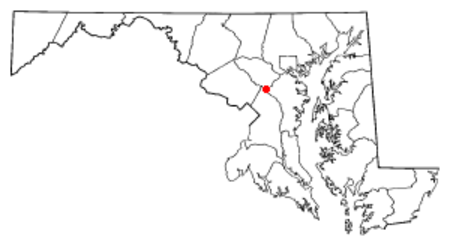Guilford Road
Guilford, MarylandJessup, MarylandRoads in Anne Arundel County, MarylandRoads in Howard County, MarylandSavage, Maryland

Guilford Road is a historic road north of Savage, Maryland that traverses Anne Arundel and Howard Counties in an area that was first settled by English colonists in the mid-1600s. Today's Guilford road is a series of disconnected segments bisected multiple times by the construction of Maryland Route 32. The Christ Church Guilford was built along the road in 1701, tended by Reverend McGill who built Athol Manor along the road in 1740. Oak Hall was built by Richard Dorsey on the road near Christ Church in 1809 as a companion to the 1706 Waveland house built by Larkin Dorsey on the "New Year's Gift" tract. In 1860, the Mt. Moriah Lodge No. 7 was built along the road.
Excerpt from the Wikipedia article Guilford Road (License: CC BY-SA 3.0, Authors, Images).Guilford Road
Guilford Road,
Geographical coordinates (GPS) Address Nearby Places Show on map
Geographical coordinates (GPS)
| Latitude | Longitude |
|---|---|
| N 39.143888888889 ° | E -76.809444444444 ° |
Address
Guilford Road 10305
20794
Maryland, United States
Open on Google Maps







